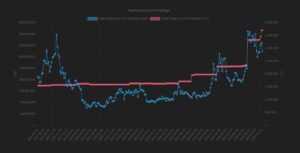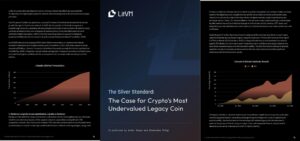Even when the central bank slows down its bond purchases, the Fed’s stockpile of assets isn’t shrinking any time soon.
Some analysts and economists are coming to the conclusion that US central bankers will keep continue to expand the $8.2 trillion balance sheet for the foreseeable, like their European counterparts at the European Central Bank. Even if the economic recovery remains on track and central bankers pare back their $120 billion in monthly bond purchases, the only way is up towards $9 trillion by next year.
Cryptocurrencies aren’t going away. Buy Bitcoin and altcoins here.
Societe Generale’s Subadra Rajappa even sees a $1 trillion boost to the assets that are already held by the Fed within 12 months despite the taper on asset purchases. Chief US economist at Mizuho Securities also expects the Fed to continue expanding the books at the pace of nominal gross domestic product, even after the latest round of quantitative easing comes to an end.

The events are partly explained by past actions by the Federal Reserve. In 2018, when the Fed allowed a small portion of its debt holdings to mature without reinvesting the proceeds, 10-year Treasuries rose to a 3.24% high. Economists worried about a potential policy error due to inflation being relatively contained (in traditional finance speak), one of the main metrics followed closely by the Fed.
At the time, US Republicans accused the Fed of having political motivations.
Central bankers reversed course and ended the balance sheet run-off two months earlier. In those two years, the Fed downsized its books as its assets fell from $4.4 trillion to $3.76 trillion. All this occurred during a relatively economically strong period, but the Fed thrust itself into the political debate as a consequence, rendering the supposed separation of powers less relevant (if at all).
At the same time, the central bank’s hands are tied more so than in the past since rates are extremely low and unlikely to rise much, even in a hot economic recovery. As such, the Fed has less tools to fight the next downturn, and makes the balance sheet even more important than in prior years. Will the Fed take the European route and delve into negative rates?
The implications are noteworthy
Treasury yields are likely to remain low (if not negative) and the credit cycle would experience less volatility. More and more, the Fed will see the Treasury market as a policy tool instead of a market of freely traded securities that are subject to the nation’s debt and growth. Consequently, the credit markets will join the bandwagon, especially since central bankers have shown a willingness to include corporate bond purchases in their attempts to create easy financial conditions.
This means that talk about scaling back asset purchases is less likely to have material effect as it will be tempered by an ever-expanding balance sheet in the year to come.
Subscribe to the semi-weekly newsletter for regular insight into bitcoin and crypto. Go on. It’s free.
Join the telegram channel for updates, charts, ideas and deals.
Did you like the article? Share it!


